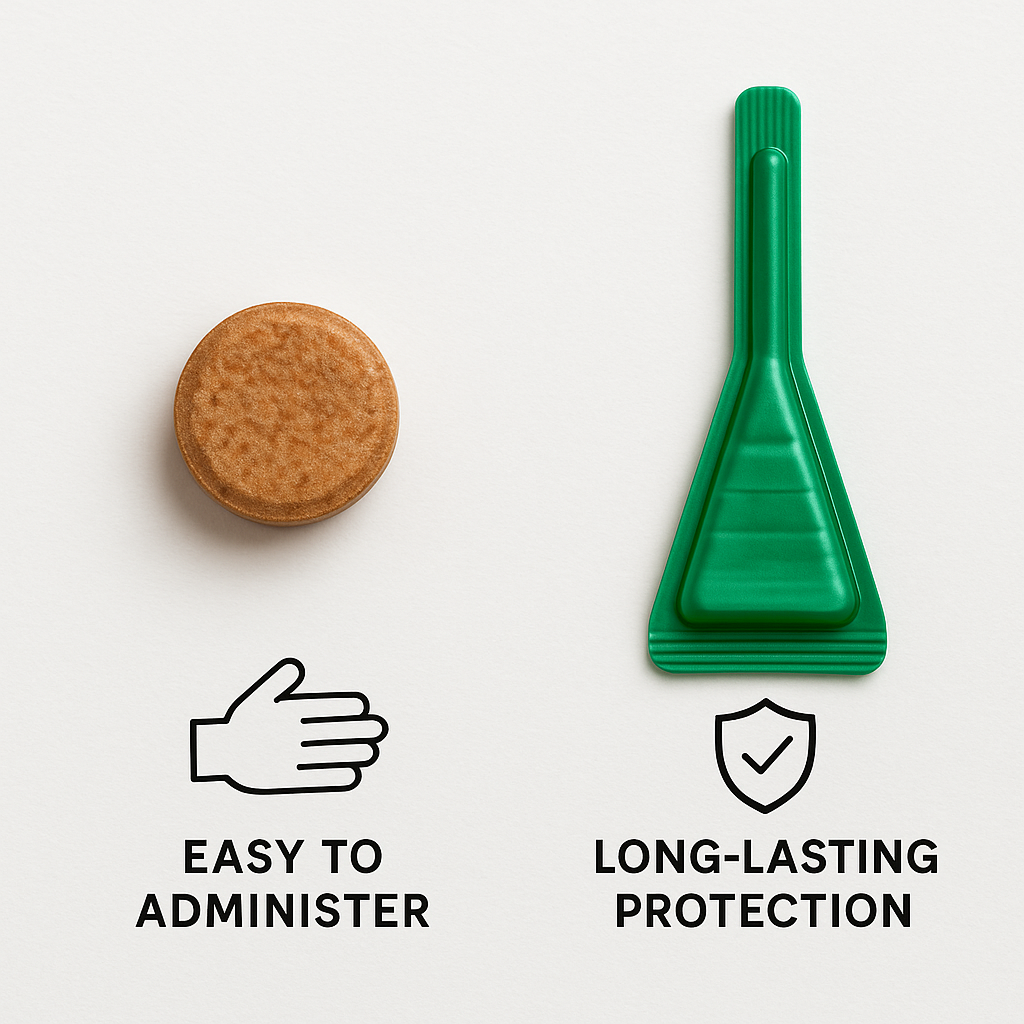Oral vs. Topical Flea & Tick Meds: Which Is Best for Your Dog? (2025 Guide)
Share
Protecting your pet from fleas and ticks is one of the most critical aspects of their healthcare. These parasites are more than just a nuisance; they can transmit serious illnesses like Lyme disease and cause severe skin irritation. The two most popular methods of prevention are oral chewables and topical "spot-on" treatments. But which one is the right choice for your pet?
Let's break down the pros and cons of each to help you make an informed decision with your veterinarian.

Oral Chewable Treatments
Given like a treat, these flavored medications are absorbed into your pet's bloodstream. When a flea or tick bites, it ingests the medication and dies quickly.
Pros:
- No Mess, No Fuss: There's no greasy residue on your pet's fur, and you don't have to worry about it rubbing off on furniture or children.
- Waterproof: Because the protection is internal, it won't wash off. This is a huge advantage for dogs who swim frequently or need regular baths.
- Easy to Administer: Most dogs see them as a tasty treat, eliminating the struggle of application.
Cons:
- Parasite Must Bite: For the medication to work, the flea or tick has to bite your pet, which means it doesn't prevent all bites.
- Potential for Side Effects: Some pets may experience gastrointestinal upset (vomiting, diarrhea). In rare cases, some oral medications (isoxazoline class) have been linked to neurological side effects like tremors or seizures in susceptible dogs.
- Requires a Prescription: Most oral options require a visit to the vet.
Topical "Spot-On" Treatments
This liquid medication is applied directly to the skin, usually between the shoulder blades, where it spreads over the body's surface.
Pros:
- Repels and Kills: Some topical formulas repel parasites, meaning they can prevent bites from happening in the first place.
- Kills on Contact: Parasites don't necessarily have to bite to be affected by the medication.
- Readily Available: Many effective topical treatments are available over-the-counter.
Cons:
- Messy Application: They can leave a greasy patch on your pet's fur and require a waiting period before you can pet the area or let them get wet.
- Not Waterproof: Swimming or bathing can reduce the effectiveness of the treatment, often requiring you to wait 24-72 hours after application.
- Risk of Skin Irritation: Some pets can have a local skin reaction at the application site.
The Bottom Line
| Factor | Oral Chews | Topical Treatments |
| Convenience |
High (easy, no mess) |
Moderate (can be messy) |
| Waterproof |
Yes |
No (effectiveness reduced by water) |
| Action |
Kills after biting |
Kills on contact, some repel |
| Side Effects |
GI upset, rare neurological issues |
Skin irritation |
The best choice depends entirely on your pet's lifestyle, health, and your household. An active, swimming dog might be better suited for an oral chew, while a pet with a sensitive stomach may do better with a topical. The most important step is to consult your veterinarian. They can assess your pet’s individual risk factors and health history to recommend the safest and most effective product for keeping them parasite-free.
